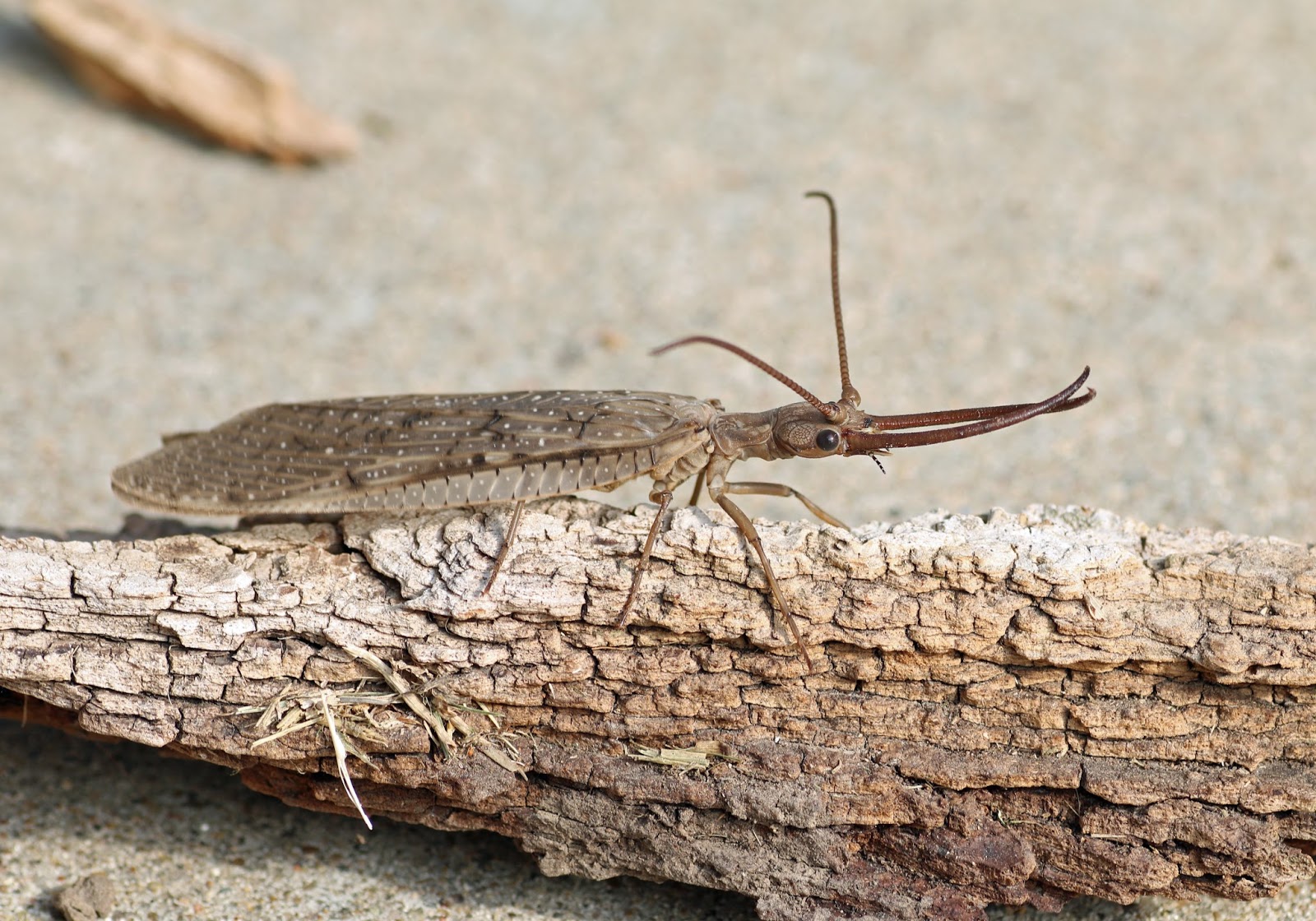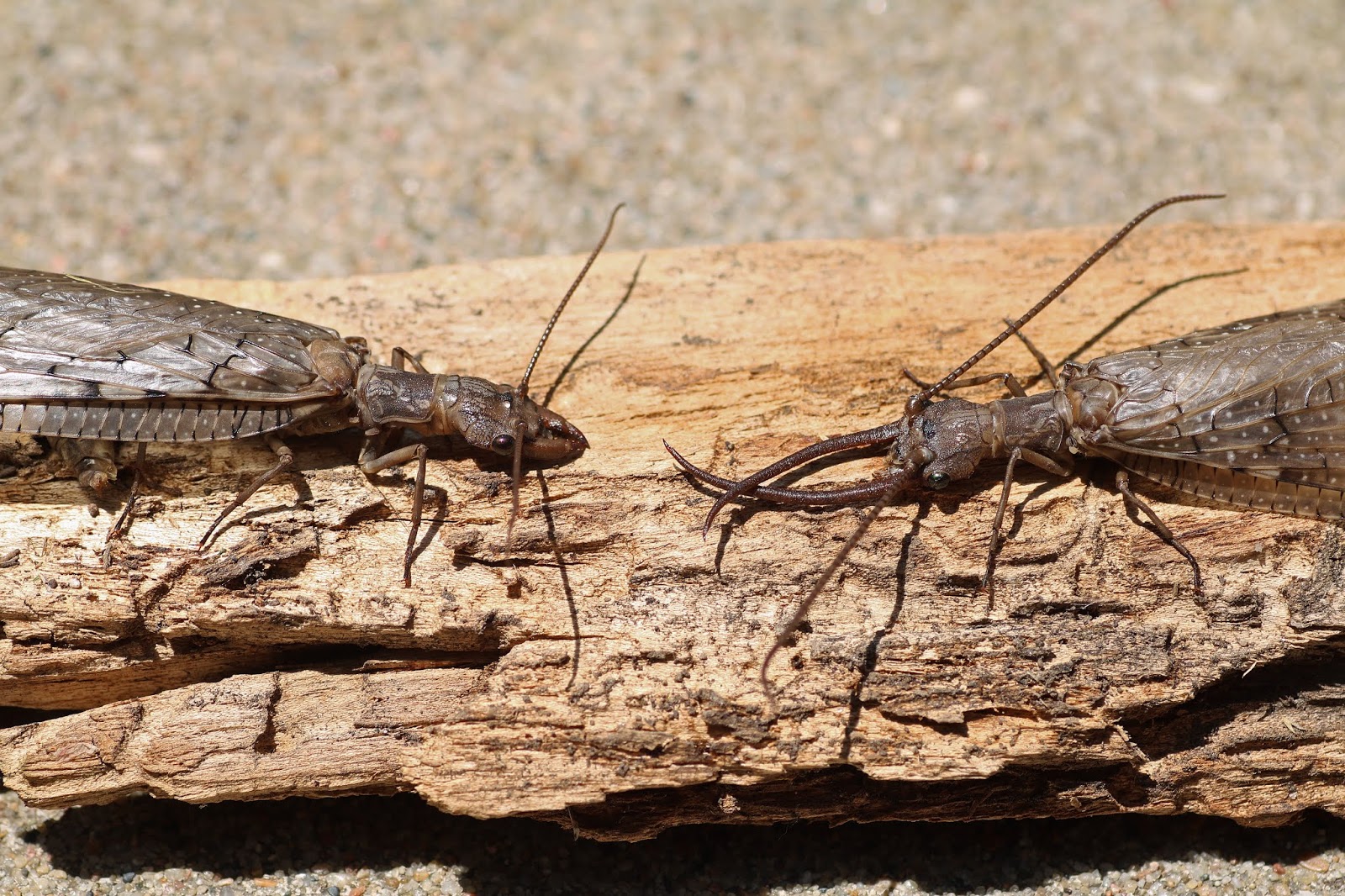
The Eastern Dobsonfly (Corydalus cornutus), is most commonly recognized in its larval form, also known as a hellgrammite. This may be due to the fact the majority of the Eastern Dobsonfly’s life span is spent as larvae (about 2 years compared to a matter of days as an adult), where they are top predators in the clean, rocky streams they inhabit. The aquatic larvae are imitated in handcrafted “flies” used by fly fisherman to entice  freshwater gamefish. Although they are prized bait for smallmouth bass and trout, they are rarely found in the stomachs of bass in nature – most likely due to their illusive nature. There are 30 species of dobsonfly in the world, four of which live in the United States. The mature Eastern Dobsonfly is one of the largest non-lepidopteran insects reaching 100- 140 mm. The males are rather hellish looking with large mandibles used solely for courtship. Females have smaller mandibles which can be used to pinch and inflict pain.
freshwater gamefish. Although they are prized bait for smallmouth bass and trout, they are rarely found in the stomachs of bass in nature – most likely due to their illusive nature. There are 30 species of dobsonfly in the world, four of which live in the United States. The mature Eastern Dobsonfly is one of the largest non-lepidopteran insects reaching 100- 140 mm. The males are rather hellish looking with large mandibles used solely for courtship. Females have smaller mandibles which can be used to pinch and inflict pain.
To view specimen records, click here.
Learn more about the Eastern Dobsonfly here.
Photos courtesy of Shelly Cox, Naturalist, Remington Nature Center, St. Joseph, MO







